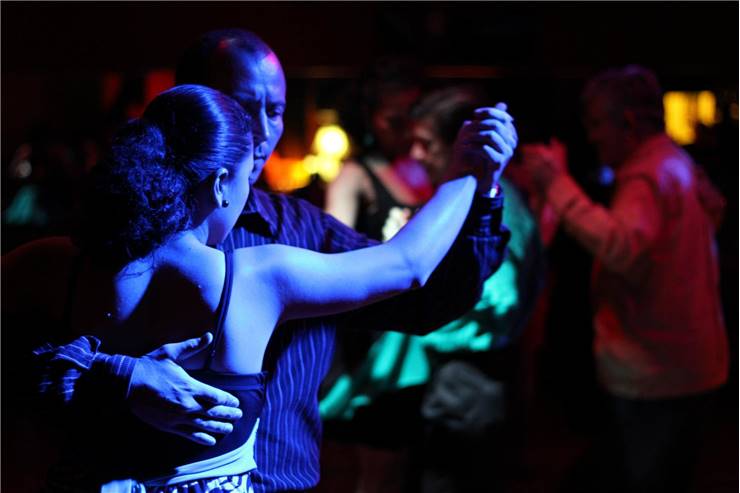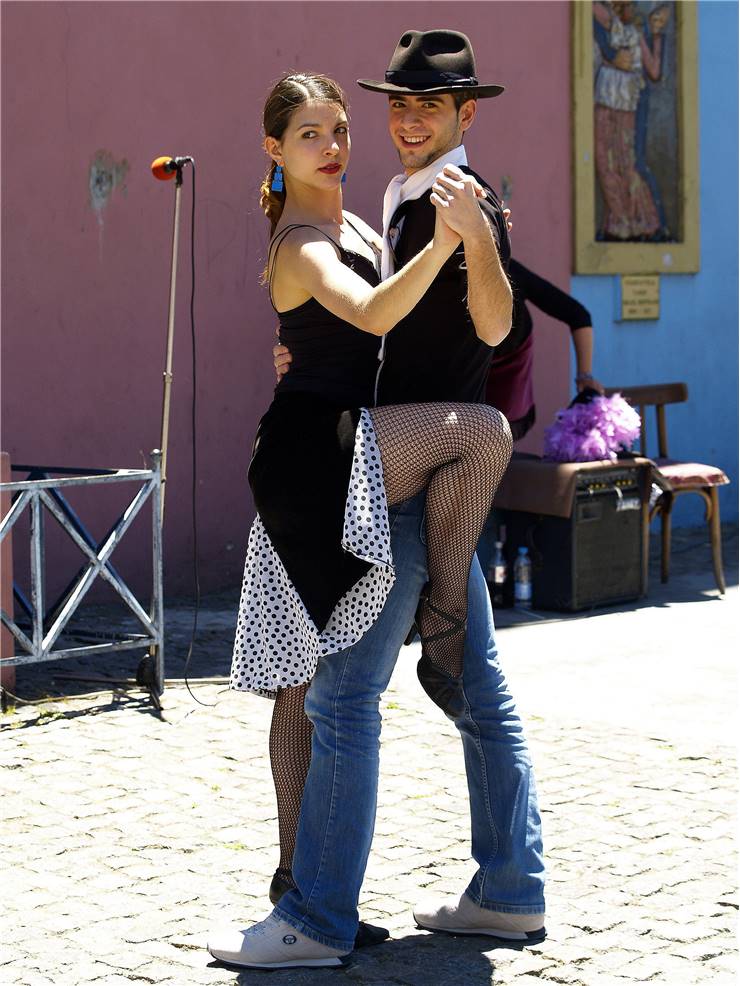Milonga Dance and Music
The history of Argentine music and dance is dominated by the worldwide popularity of Tango, but this influential music and dance style can be traced to older Argentine folk dances that were born between the foundation of this diverse country in the 16th century to a great time of social innovation in the 19th century. The direct origin of tango can be found in Milonga, a widely popular dance and music style in Argentina that is still danced today.
Argentina as a modern country was born from the Spanish, French, Italian and many other immigrants who started arriving in Buenos Aires in the second half of 16th century. This melting pot of cultures quickly gave birth to many new styles of folk music and new music types that were created by adapting influences from other worldwide dances such as Waltz, Polka, Mazurka, Schottische, Spanish and Cuban music, and rhythms gathered from all around the Latin America and Africa. Such innovation eventually gave birth to Hanabera (hanavera) style of music and dance, and the mix of this music style and polka eventually formed Milonga in the rural areas of Río de la Plata in Argentina and Uruguay. The core tempo of Milonga is fast and energetic, but when slowed down, it enabled dancers to enjoy music that almost precisely mimics the tango. With only that simple change, modern Tango was born in the suburbs of Buenos Aires in the early 19th century.

Since the establishment of Milonga dance and music styles, the term “milonga” has managed also to become a synonym for the place or event where tango or milonga music is danced. This Across Argentina, “milonga” events are usually held each week with the duration of between 4 to 5 hours. Dancers there can enjoy tango, vals and milonga music. Such events are also great for novices since most of the milonga events start with training or demonstration performances.
Milonga Music
The genre of milonga music originated in the region of e Río de la Plata in Argentina and Uruguay and has served as a precursor to the popular Tango music which was first danced in the poorer neighborhoods of the Buenos Aires and Montevideo. Milonga as a style of music reached the height of its popularity in the late 19th century (more precisely around the 1870s).
Milonga was created as the mix of several music styles from Spain, Poland, and native Argentine music styles
Milonga music was derived from the elements of Cuban habanera, Polka and the earlier Argentine style of singing called payada de contrapunto. Milonga differs from habanera in a way the notes of the core pulses are played. Hanabera features four pulses in a standard two-four formation where every note is stressed, but milonga all four notes are stressed (with the weakened fourth beat that makes it very waltz-like) and tempo is doubled. Some historians speculate that this increase in tempo can be attributed to the popularity of European polka in Argentina during the middle of 19th century.
The rhythm of the milonga is set to a fast-paced 2/4 tempo, which can be slowed down significantly to produce pleasing tempo of a traditional tango song. The eight core beats of milonga and syncopated in such a way that accents are placed on 1st (or 2nd) beat, as well as on 4th, 5th, and 7th.
As musical artists started developing new milonga songs, they eventually started practicing with reduced tempo speeds, which led to more and more of tango music being created. While the tango becomes the most popular Argentine national dance, milonga remained in strong popularity throughout the 19th and 20th century.
One of the most famous Argentine composer of Milonga music today is pianist Fernando Otero. During the golden age of tango, milonga received much attention from Argentine and Uruguayan artists, including the composers and singers such as:
- Angel D'Agostino
- Aníbal Troilo
- Rodolfo Biagi
- Ástor Piazzolla
- Villoldo
- Edgardo Donato
- Gabino Ezeiza
- Juan d'Arienzo
- Angel Vargas
- Roberto Firpo
- Francisco Canaro
- Lucio Demare
- Pedro Laurenz
- Domingo Federico
- Carlos Di Sarli
Milonga Dance
Milonga dance is famous for being very close to modern tango, but it allows greater levels of relaxation of body and legs. While tango can sometimes be stiff, dramatic, stoic and require precise synchronized movements of dance partners, the milonga is viewed as a more relaxing type of dance that is focused on increased dancing speed and lack of pauses. The dancing is usually consisting of rhythmic walking, humorous movement patterns and lack of complicated figures and body poses.

One of the most interesting elements of milonga dance is its tendency for comedy, or more precisely, the "quebradas" motions that are performed as a jerky, improvised and semi-athletic body position moves that aim to convey the feeling of irony, comedy, exaggerated drama or humorous appearance. The dance also features a suggestive pause state called “cortes”, that enables dancers to suddenly totally stop and break the flow of the dance (sometimes in the middle of performing comedic body poses).
Since Milonga was one of the preferred dances in the poorer districts of large Argentine cities and rural areas, this music was usually performed using common instruments such as guitars, flutes, violins, pianos, harps, organ-grinders and even paper-combs and was danced everywhere from the specific dance gatherings to the clubs and street events. Same as tango, milonga was for many years viewed by the Argentine high society as the “dance of the poor ”.
Fast-paced and energetic Milonga helped the emergence of Tango
Milonga can be danced in several styles, both of which are much faster than tango and demand from dancers to be very precise and to make no mistakes. Milonga dance is often regarded as “unforgiving”, especially to tango players who are used to the slower pace, easier moves, and freedom of interpretation. Milonga is regarded by Argentinian dancers as the dance that has to be perfected, with no space being left to any mischiefs or mistakes that could effectively be hidden or ignored during the dance of slower Tango.
Two most famous types of Milonga dance are:
- Milonga Lisa (simple Milonga) – Dancers move and step on the grain in line with every beat of the milonga music
- Milonga con Traspié – More advanced version, in which dancers have the freedom to make double steps, or do routines that require taking three steps between two beats.

